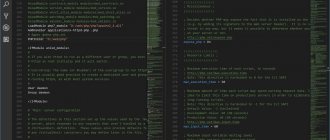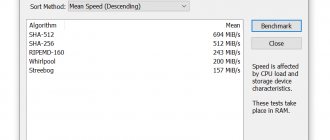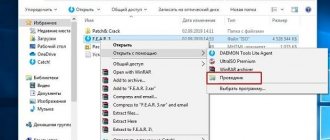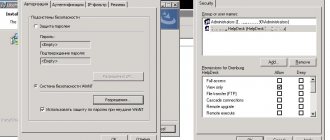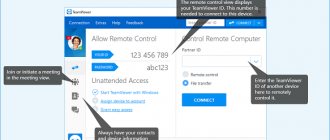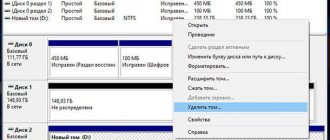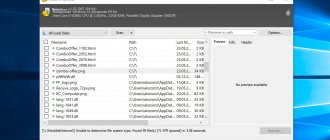Description
Download phpMyAdmin in Russian is a powerful developer tool written in PHP to handle MySQL administration over the Internet. The utility can perform various operations such as creating and deleting databases, deleting, adding or editing fields, creating, deleting or modifying tables, executing any SQL statement and managing field keys.
The application uses a web browser, which means you can connect to a local or remote MySQL database from almost anywhere on the Internet and manage databases efficiently. Its ultraportable approach makes it easily acessible from any device.
phpMyAdmin is designed not only for experienced users, but also for beginners. The developer application does not require any additional SQL knowledge to operate. Its simple and intuitive interface keeps things simple and organized all the time.
What's even more interesting is that the program comes with a wide range of documentation to help you get through this. You can also update wiki pages to share ideas and instructions on various operations. In addition, an active support team is always ready to triage your queries.
The execution speed, ease of use and reliability of database management software are some of the main reasons for its popularity among users. The Windows application has earned a unique place among the components of other prominent web server software packages like XAMPP, WampServer or easyPHP. You can also find phpMyAdmin in the management tools provided by website hosting. Download phpMyAdmin for free in Russian to start managing databases like a pro.
✔ Apache and Nginx: Installing phpMyAdmin.
Content:
1. Introduction.
2. Preparing the apache web server. 3. Install phpmyadmin. 4. Installation on nginx. 5. Setting up phpmyadmin. 6. Original sources of information. The main part of this article was taken from the site serveradmin.ru, . If you liked this article, then go to its author’s website - serveradmin.ru , and support the author financially or with information support! He will be very pleased or useful!
Introduction.
What phpMyAdmin :
- Creating new databases and users, assigning rights.
- Export or import of databases of not very large volume, up to 50 megabytes.
- View the contents of databases or information about them.
Let's get started with a simple installation of phpMyAdmin on CentOS 7 .
Preparing the apache web server.
If you run on a bare server:
# yum -y install phpmyadmin
You will see a complete list of dependencies, but it will not include the web server itself and the php , only its modules. You need to first install and configure the Web server yourself.
httpd web server ( Apache ).
# yum install -y httpd
Now let's install php , without it the administration panel will not work:
# yum install -y php
We launch the web server, add it to startup and check its operation:
# systemctl enable httpd # systemctl start httpd
Go to https://your-ip-address.
You should see the Apache .
Now let's check if php . Create a test page in the /var/www/html folder:
# mcedit /var/www/html/index.php
the Apache owner to the created file:
# chown -R apache:apache /var/www/html/index.php
Now go to https://server-ip-address again, you should see the phpinfo :
If you see the same output, then everything is in order, the web server is ready to work with phpMyAdmin . Let's start installing it.
Installing phpMyAdmin.
Before installing phpMyAdmin, install PHP according to the instructions “CentOS 7: Installing PHP”.
Install phpMyAdmin with all dependencies:
# yum install -y phpmyadmin
httpd configuration directory /etc/httpd/conf.d. Let's save the original file just in case before we start editing it:
# cp /etc/httpd/conf.d/phpMyAdmin.conf /etc/httpd/conf.d/phpMyAdmin.conf.orig
By default, in the config, access to the control panel is disabled for all addresses except 127.0.0.1 . To open access to everyone, make the file look like this:
# mcedit /etc/httpd/conf.d/phpMyAdmin.conf
Alias /phpMyAdmin /usr/share/phpMyAdmin Alias /phpmyadmin /usr/share/phpMyAdmin AddDefaultCharset UTF-8 Require all granted Require all granted Order Deny,Allow Deny from All Allow from None Order Deny,Allow Deny from All Allow from None Order Deny ,Allow Deny from All Allow from None
I removed everything unnecessary from the file, including settings that were specific to the apache 2.2 .
Restart httpd :
# systemctl restart httpd
Go to https://server-ip-address/phpmyadmin.
You should see the login page:
If you have nowhere to connect, install MariaDB .
Everything is described in more detail in the instructions “CentOS 7: Installing and Configuring MariaDB”.
# install MariaDB
Now we quickly install the database and launch it according to the instructions.
phpMyAdmin web interface again root account of the database system. The main page of the panel will open with general information about the server:
At this point, the installation is complete, the web panel can be used. We will look at some useful settings further in the corresponding section, but now we will install phpMyAdmin nginx web server .
Installation on nginx.
phpMyAdmin to work nginx + php-fpm web server . Let's look at the general case of quickly and easily setting up phpMyAdmin on nginx .
Install nginx :
# yum install -y nginx
Install php-fpm :
# yum install -y php-fpm
We start the services and add to startup:
# systemctl start nginx.service # systemctl enable nginx.service # systemctl start php-fpm.service # systemctl enable php-fpm.service
We go to https://server-ip-address and check. You should see the nginx :
Next, install phpMyAdmin on the web server with nginx :
# yum install -y phpmyadmin
nginx configuration file to add the installed web control panel:
# mcedit /etc/nginx/nginx.conf
We bring the server {} section to the following form:
server { listen 80 default_server; listen [::]:80 default_server; server_name_; root /usr/share/nginx/html; index index.php index.html index.htm; location ~ \.php$ { fastcgi_pass 127.0.0.1:9000; fastcgi_index index.php; include fastcgi_params; fastcgi_param SCRIPT_FILENAME $request_filename; fastcgi_ignore_client_abort off; } include /etc/nginx/default.d/*.conf; location / { } error_page 404 /404.html; location = /40x.html { } error_page 500 502 503 504 /50x.html; location = /50x.html { } }
I took the standard parameters and added a few new lines to make it work correctly. Now we need to make a symbolic link (SIM link) from the phpmyadmin scripts folder to the root directory of the nginx :
# ln -s /usr/share/phpMyAdmin /usr/share/nginx/html/phpmyadmin
Restart nginx :
# systemctl restart nginx
Then, in theory, everything should work, but it didn’t work for me, I had to restart the entire server because the php mbstring , although it was installed and connected. Restarting php-fpm didn't help either, but rebooting did. I checked it twice and reproduced the error both times. I didn’t try to figure out the reason for this behavior, just restart the server and continue.
Go to https://server-ip-address/phpmyadmin. You should see the standard login page. I had a warning on it:
Warning in ./libraries/session.inc.php#105 session_start(): open(/var/lib/php/session/sess_j0r4moac0oo7oh250e6t14rn1kfkl6ta, O_RDWR) failed: No such file or directory (2)
This is due to the fact that there is no session directory in the /var/lib/php folder.
Let's fix this:
# cd /var/lib/php/ # mkdir session # chown apache:apache session/
Please note that I assigned the user apache nginx web server . This is due to the fact that php-fpm apache user by default . It makes more sense to change this and run it from nginx . To do this, you need to edit the /etc/php-fpm.d/www.conf file, changing the user and group . I didn't do this now for simplicity. I leave this option at your discretion.
Reload the page, the error should disappear. You can connect to mysql . If you do not have a database server installed, see above how to quickly install and launch it. Now that the installation is complete, let's look at a few useful phpmyadmin .
Setting up phpMyAdmin.
Phpmyadmin is ready to use immediately after installation; additional settings are not required.
Let me give you a useful example of use: restricting access to phpMyAdmin using web server tools. mysql account name , but also the user and password to access the panel directly.
Apache web server . We will use a standard tool to restrict access to a directory using .htaccees .
Let's create the following file in the folder with phpMyAdmin :
# mcedit /usr/share/phpMyAdmin/.htaccess
AuthName "Enter Password" AuthType Basic Require valid-user AuthUserFile "/usr/share/phpMyAdmin/.htpasswd"
Now let's create a file with authorization data:
# htpasswd -bc /usr/share/phpMyAdmin/.htpasswd user password
- user — user name;
- password - password.
For authorization to work, you need to add the AllowOverride parameter in the /etc/httpd/conf.d/phpMyAdmin.conf file in the Directory so that it turns out like this:
AddDefaultCharset UTF-8 Require all granted AllowOverride All
Restart Apache and check the settings. When you access the web panel address, an authorization window should pop up:
Let's do the same on nginx. We also create a file with the .htaccess :
# htpasswd -bc /usr/share/phpMyAdmin/.htpasswd user password
If you do not have httpd , then most likely you will see the error:
-bash: htpasswd: command not found
The required utility is not in the system. Install htpasswd on the server:
# yum install -y httpd-tools
Create a file with the password again:
# htpasswd -bc /usr/share/phpMyAdmin/.htpasswd user1 password
Adding password for user user1
nginx configuration file , adding a new location to the server {} section:
location /phpmyadmin/ { auth_basic "Enter password"; auth_basic_user_file /usr/share/phpMyAdmin/.htpasswd; }
Save the config, restart nginx and check access to the page. The same login window as with apache .
Let's look at a few more useful phpmyadmin .
After logging into the panel, in the Settings you will see a message:
Now you can go to the settings and change them. I usually disable new version checking. They come out quite often, I’m too lazy to update them anyway, so I don’t need information about new versions. I also disable the logo, you can upload your own. Look through the settings yourself and see what interests you. All points are well documented, you can read what they are responsible for. Sometimes it is useful to display a separate column in the list of tables with information by creation and update date. This is configured in Settings -> Main panel -> Database structure .
If you want to connect to a remote mysql server using phpmyadmin , use the connection setup script at https://server-ip-address/phpmyadmin/setup/.
Original sources of information.
- serveradmin.ru “Installing phpmyadmin on CentOS 7” from 10/27/2017.
Bottom line
Download phpMyAdmin in Russian, the utlimate utility, which copes with its task quite effectively. The application's extreme portability, simple and intuitive user interface, and amazing features make it a worthy piece of MySQL software. You can access the application from anywhere and manage your databases without any hassle. Regardless of what shortcomings there are, the overall experience is still amazing, and the important thing is that it does what it's intended to do.
Introduction
The main operations for which you will need this script as an everyday tool are:
- Creating a new, clean database for the site.
- Creating specific tables with fields inside the database.
- Import and of course export of databases.
- DB backup.
- Optimization of database tables.
- One-time introduction of hundreds of changes to the database using an SQL query.
In fact, this script has many more capabilities, but I have listed the main ones that I use most often myself.
In fact, phpMyAdmin is installed on any self-respecting hosting and is a standard for providing webmasters and bloggers with an interface for working with their databases. Beginners are often confused because the database is created in the cPanel interface, and to change the database you have to go to another panel.
On free hosting, it also happens that this program is not installed by default, so I have prepared instructions for you on how to install it yourself. It's short, don't worry, there's no room for mistakes.
